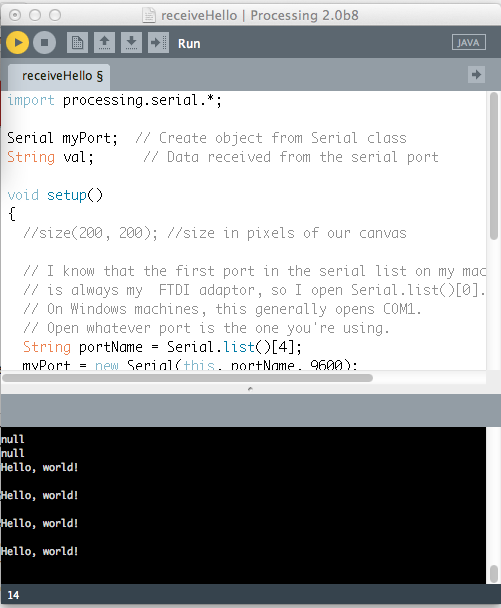- Processing Disorders In Children
- Processing
- Deer Processing In My Area
- Processing Exception Usps
- Processing At Ups Facility
- Processing Times Uscis
- Processing Disorder
The first step in this processing is the creation of your case in our system. Once this is complete, we will send you a Welcome Letter by e-mail or physical mail. With the information in this letter, you can log in to our Consular Electronic Application Center (CEAC) to check your status, receive messages, and manage your case. Processing is a flexible software sketchbook and a language for learning how to code within the context of the visual arts. Since 2001, Processing has promoted software literacy within the visual arts and visual literacy within technology. Hardcopy Bill/Attachments Processing To avoid processing delays, OWCP is asking medical providers to submit medical bills/attachments electronically. Hardcopy bills and documents require a team of individuals to physically report to our mailroom facility to open, scan, and transmit these documents to our bill processor for payment. 3 ways to abbreviate Processing. How to abbreviate Processing? Get the most popular abbreviation for Processing updated in 2021.
With the release of ProcessingJS it has become relatively easy to share your Processing programs on the web. The process works by compiling your Java code into JavaScript and then rendering the output using the HTML5 canvas element in the browser. The result is a web-based version of your sketch that is rendered without any plugins -- this means that your program will be accessible in any modern browser, including on mobile devices!
Before you start: Preparing your source code
If you've been working in Eclipse you have to make some minor adjustments to your Processing source code before you can render it on the web. Here's how to get started:
- Create a new text file to hold your source code. Use any text editor (TextEdit on the Mac or Notepad on the PC).
- Copy the code from your main class into this new source code file. Remove any import statements (Processing on the web won't work with any imported Java libraries). Also remove the class block - your code should be 'loose' and not contained with a block of execution
- If you have multiple classes / files you can simply paste them into your newly created text file AFTER your main class, making sure not to mess up the braces for each class. If you have any classes that were organized into packages you should place them into this file as well. Change all 'public class' declarations to just 'class' and remove any import statements.
- Save your file as plain text using the 'pde' file extension - i.e. .'myProgram.pde'
Now we can embed the code into a web page by doing the following:
- Create a new HTML document
- Place a copy of your Processing PDE file into the same folder as your HTML document. In this example our PDE file is named 'myProgram.pde'
- Place a copy of the processing.js library file into the same folder as your HTML document. You can get a copy of this file from the processingjs.org website
- In the head of your document, place the following code to load in the processingjs library:
- In the body of your document create a canvas tag that references your PDE file, like this:
Here's a live example (click and hold your mouse to release some colored balls)
If you are planning on using external artwork you will need to upload your assets to your website along with your PDE source code file. Then add the following 'preloader' directive at the top of your sketch as a comment - this will tell ProcessingJS to have the files available when your sketch begins running.
Data processing is, generally, 'the collection and manipulation of items of data to produce meaningful information.'[1] In this sense it can be considered a subset of information processing, 'the change (processing) of information in any manner detectable by an observer.' [note 1]

The term Data Processing (DP) has also been used to refer to a department within an organization responsible for the operation of data processing applications.[2]
Data processing functions[edit]
Data processing may involve various processes, including:
- Validation – Ensuring that supplied data is correct and relevant.
- Sorting – 'arranging items in some sequence and/or in different sets.'
- Summarization – reducing detailed data to its main points.
- Aggregation – combining multiple pieces of data.
- Analysis – the 'collection, organization, analysis, interpretation and presentation of data.'
- Reporting – list detail or summary data or computed information.
- Classification – separation of data into various categories.
History[edit]
The United States Census Bureau history illustrates the evolution of data processing from manual through electronic procedures.
Manual data processing[edit]

Processing Disorders In Children
Although widespread use of the term data processing dates only from the nineteen-fifties,[3] data processing functions have been performed manually for millennia. For example, bookkeeping involves functions such as posting transactions and producing reports like the balance sheet and the cash flow statement. Completely manual methods were augmented by the application of mechanical or electronic calculators. A person whose job was to perform calculations manually or using a calculator was called a 'computer.'
The 1890 United States Census schedule was the first to gather data by individual rather than household. A number of questions could be answered by making a check in the appropriate box on the form. From 1850 through 1880 the Census Bureau employed 'a system of tallying, which, by reason of the increasing number of combinations of classifications required, became increasingly complex. Only a limited number of combinations could be recorded in one tally, so it was necessary to handle the schedules 5 or 6 times, for as many independent tallies.'[4] 'It took over 7 years to publish the results of the 1880 census'[5] using manual processing methods.
Automatic data processing[edit]
The term automatic data processing was applied to operations performed by means of unit record equipment, such as Herman Hollerith's application of punched card equipment for the 1890 United States Census. 'Using Hollerith's punchcard equipment, the Census Office was able to complete tabulating most of the 1890 census data in 2 to 3 years, compared with 7 to 8 years for the 1880 census.... It is estimated that using Hollerith's system saved some $5 million in processing costs'[5] in 1890 dollars even though there were twice as many questions as in 1880.
Electronic data processing[edit]
Computerized data processing, or Electronic data processing represents a later development, with a computer used instead of several independent pieces of equipment. The Census Bureau first made limited use of electronic computers for the 1950 United States Census, using a UNIVAC I system,[4] delivered in 1952..
Other developments[edit]
The term data processing has mostly been subsumed by the more general term information technology (IT).[6] The older term 'data processing' is suggestive of older technologies. For example, in 1996 the Data Processing Management Association (DPMA) changed its name to the Association of Information Technology Professionals. Nevertheless, the terms are approximately synonymous.

Applications[edit]
Processing
Commercial data processing[edit]
Deer Processing In My Area
Commercial data processing involves a large volume of input data, relatively few computational operations, and a large volume of output. For example, an insurance company needs to keep records on tens or hundreds of thousands of policies, print and mail bills, and receive and post payments.
Data analysis[edit]
In science and engineering, the terms data processing and information systems are considered too broad, and the term data processing is typically used for the initial stage followed by a data analysis in the second stage of the overall data handling.
Data analysis uses specialized algorithms and statistical calculations that are less often observed in a typical general business environment. For data analysis, software suites like SPSS or SAS, or their free counterparts such as DAP, gretl or PSPP are often used.
Processing Exception Usps
See also[edit]

Notes[edit]
Processing At Ups Facility
- ^Data processing is distinct from word processing, which is manipulation of text specifically rather than data generally.'data processing'. Webopedia. Retrieved June 24, 2013.
External links[edit]
| Wikiquote has quotations related to: Data processing |
References[edit]
- ^French, Carl (1996). Data Processing and Information Technology (10th ed.). Thomson. p. 2. ISBN1844801004.
- ^Illingworth, Valerie (11 December 1997). Dictionary of Computing. Oxford Paperback Reference (4th ed.). Oxford University Press. ISBN9780192800466.
- ^Google N gram viewer. Retrieved June 26, 2013.
- ^ abTruesdell, Leon E. (1965). The development of punch card tabulation in the Bureau of the Census, 1890. United States Department of Commerce.
- ^ abBohme, Frederick; Wyatt, J. Paul; Curry, James P. (1991). 100 Years of Data Processing: The Punchcard Century. United States Bureau of the Census.
- ^Google N gram viewer. Retrieved April 28, 2018.
Processing Times Uscis
Further reading[edit]
Processing Disorder
- Bourque, Linda B.; Clark, Virginia A. (1992) Processing Data: The Survey Example. (Quantitative Applications in the Social Sciences, no. 07-085). Sage Publications. ISBN0-8039-4741-0
- Levy, Joseph (1967) Punched Card Data Processing. McGraw-Hill Book Company.
